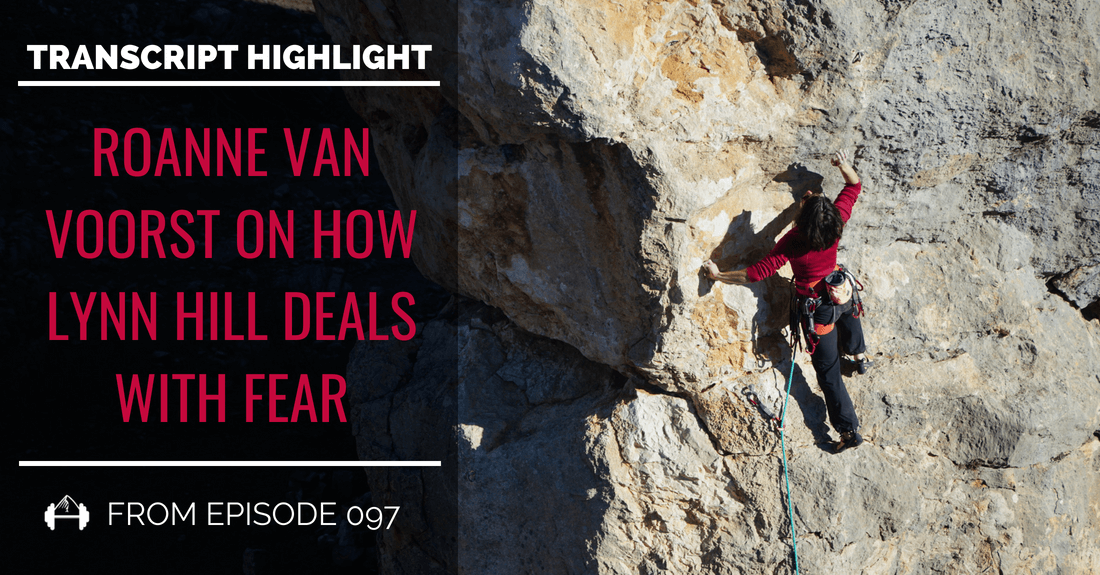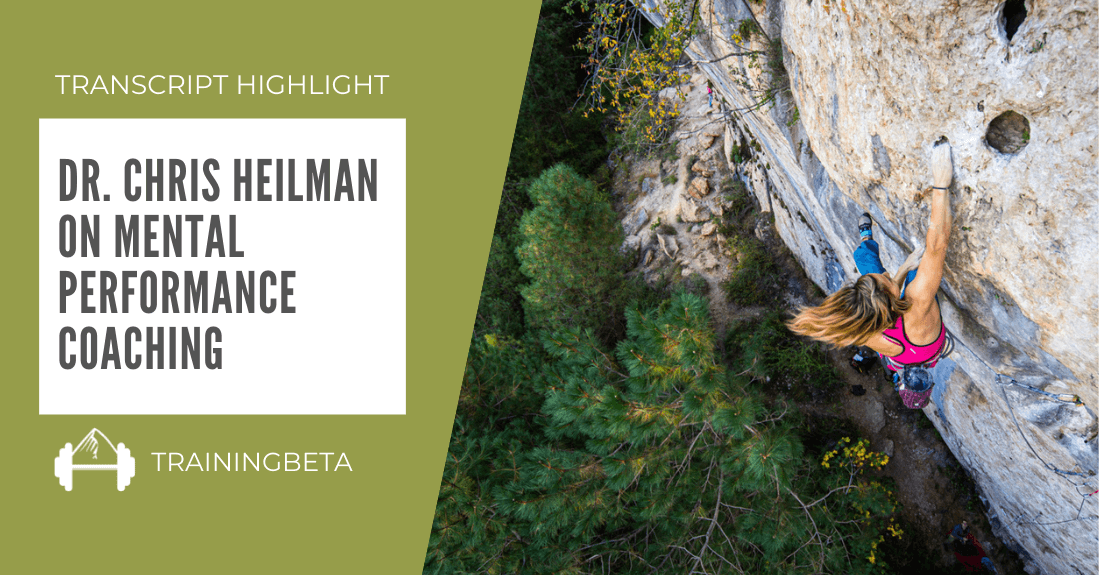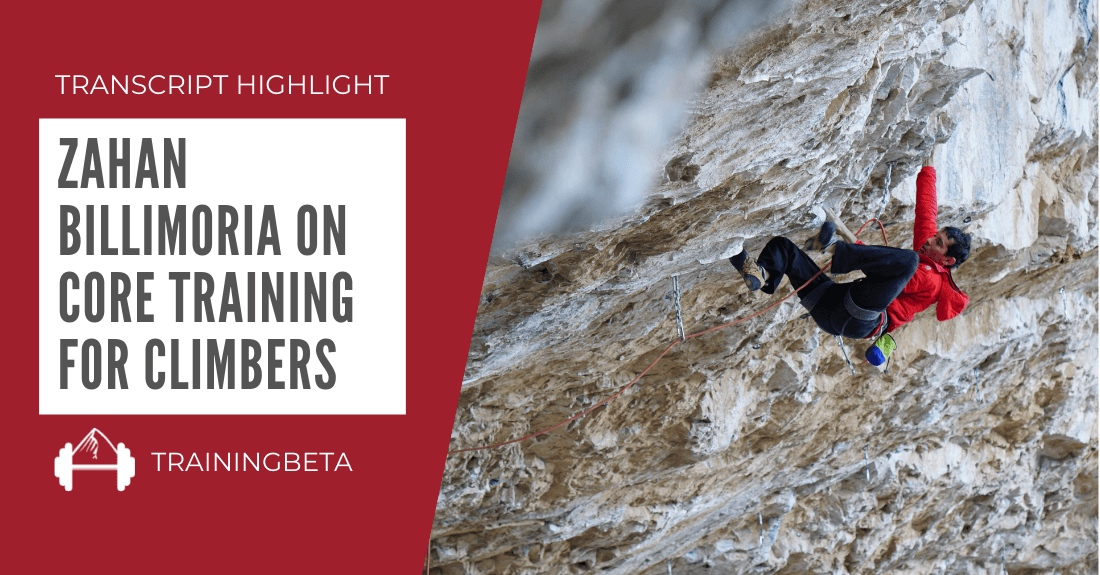Fear can be one of the most limiting factors in climbing performance.
The fear of falling is probably the most common climbing fear and we are all familiar with climbers who become paralyzed with fear as soon as a bolt reaches their waist. Chances are you were even that person at one point in your climbing. However, while most climbers grow past this overwhelming fear of being above a bolt, fear can manifest itself in more subtle ways. Even elite climbers who seem to be fearless deal with it on an ongoing basis.
I (Matt Pincus) recently listened to Neely’s TrainingBeta Podcast discussion with Dutch climber and researcher Roane Van Voorst about her book Fear! in which she interviews top climbers (and other extreme sports athletes) about how they manage fear. I was struck by how much useful information and actionable advice they outlined. One of the things I have noticed in working with athletes who have trouble dealing with the fear of falling is that they are frustrated by the lack of a concrete strategy for working on overcoming their fear. Many of my athletes either seem convinced they are going to always feel fear or are frustrated by not knowing exactly how to work on their fear.
Over the coming weeks, I’m going to share more excerpts from this interview that I think contain practical advice we can all use to help prevent fear from undermining our climbing performance. First up is Lynn Hill‘s 4-Step process for dealing with fear. Enjoy!
Roanne Van Voorst on How Lynn Hill Deals with Fear
Neely Quinn: Okay, I really want to know some of the standouts. What were some of the most memorable things you learned from people?
Roanne Van Voorst: For example, Lynn Hill, what she does- and it’s interesting that she does them both in her climbing but also in her daily life- she has really trained herself to, first of all, observe that she is getting stressed. She really recognizes in her body that stress is getting to her. She might recognize this because she feels pumped, or because she notices that she is getting kind of a tunnel vision, where you go “There’s nothing here! There’s nothing for my foot!”.
As soon as she starts thinking about those things, she forces herself to take a break on whatever is possible. This might be kind of climbing back towards a spot where you can shake out, or making one more move so that you can stand for a little bit on a slab wall. Then she just kind of stops climbing. Literally, she will have a four-step methodology where she says to stop immediately. As soon as you feel that you’re stressed, then take a mini break, but whatever you do, don’t continue on while the thoughts are raging through your head and you have all these thoughts of “Oh my god, I’m going to fall, I don’t know where to go”. You don’t want to go there, because it’s negatively going to impact your climbing. So instead, step away. Try to find a point where you can have a little rest.
Then she says to accept the fact that it’s not the route that is being so difficult, it’s you being afraid. There is something going on in your mind that is making you not see all the options you still have. Then what she does is she refreshes her mind. She breathes, she thinks positive thoughts, but most of all she tries to, from that break, think outside of the box. Literally. So she will look to the right and to the left, always, instead of just looking up to where you want to go, and thinking “Oh there is niching there”. She has trained herself to look to the right, quite far, and then to the left. She says that often times there is a pretty good hold to the right, and you just hadn’t seen it because you were so scared, and therefore you had this tunnel vision.
She goes through these steps, and it sounds like it’s a lot, but I’ve noticed that if you practice this, if you practice giving yourself a break immediately when you feel stressed, and then observing “Oh, I’m being afraid, that’s what’s going on”. Then looking to the left and to the right, it actually goes pretty fast. Only then will she try to climb further. The fun thing- or actually the interesting thing- is that she also does this in normal life. So when she is getting into a fight with her partner, for example, she will walk outside of the room, go to the toilet, whatever. Have a break, observe that she is feeling stressed, force herself to think outside of the box, and then go back into the conversation. That is another thing that I have taken from her.
Neely Quinn: That’s very zen of her- that is very mindful of her.
Full Episode/Transcript: TBP 097 :: How to Overcome Fear in Climbing with Author Roanne van Voorst
(photo courtesy of Jonathan Siegrist)
Other Articles You Might Like:
- Top 5 Fear of Falling Articles
- Dave MacLeod and The Fear of Falling
- TBP 023 :: Arno Ilgner on Overcoming Fear and Ego in Climbing
- TBP 055 :: Lynn Hill (need I say more?)






Leave A Comment